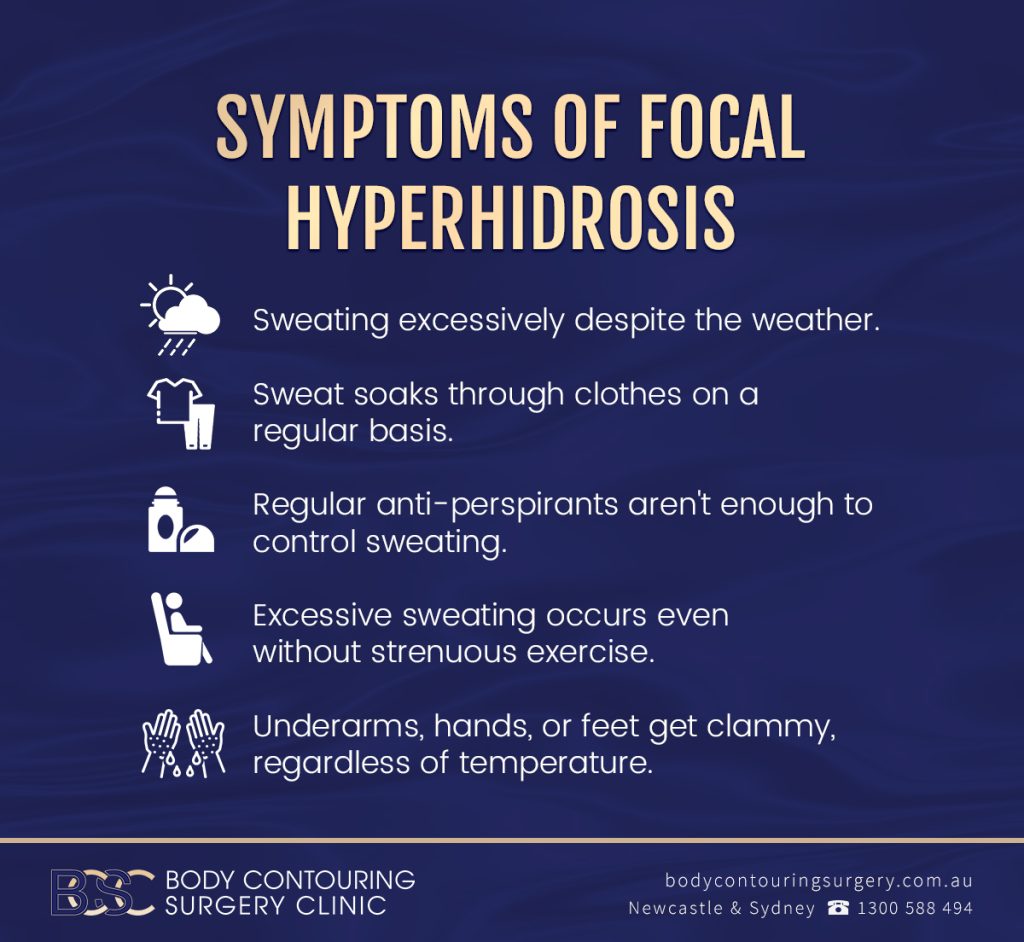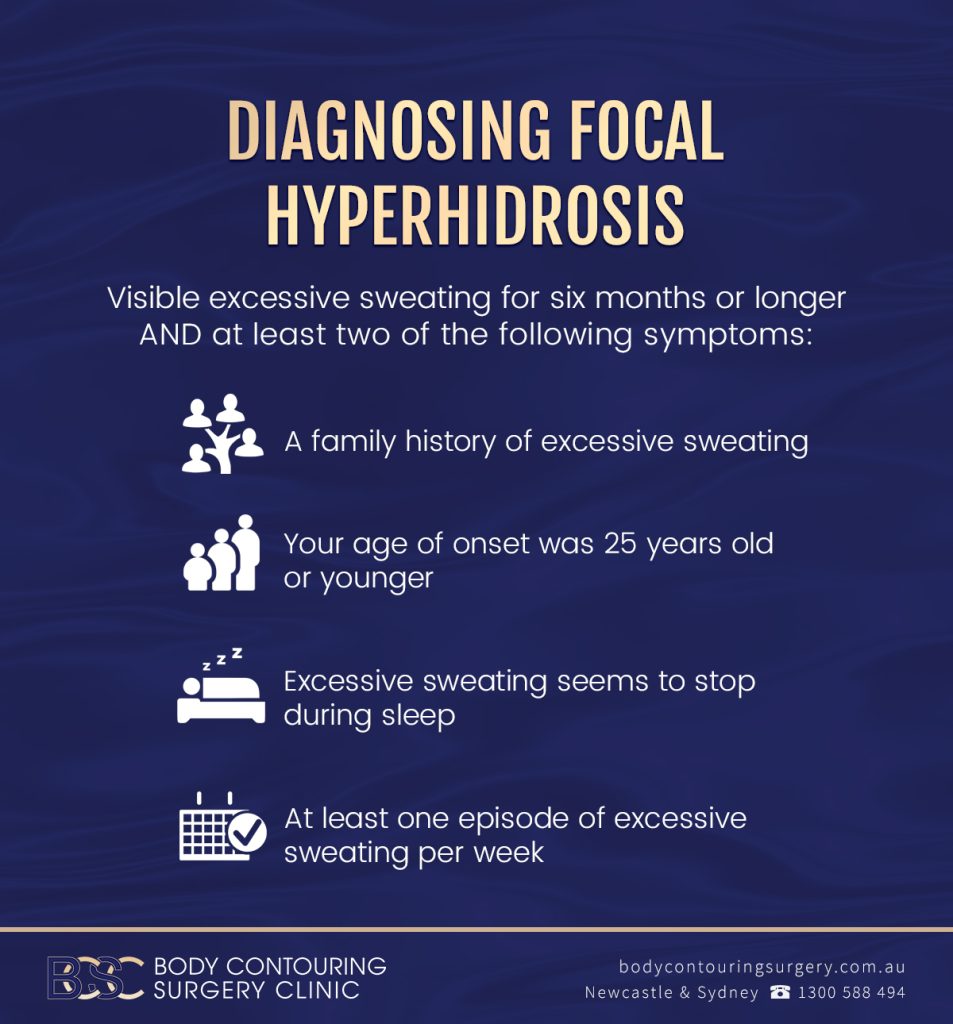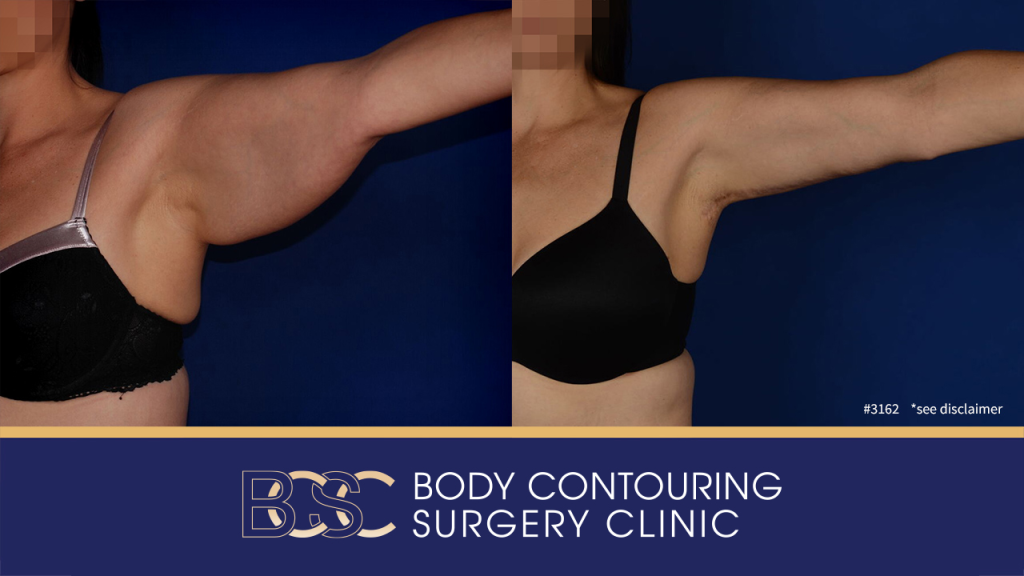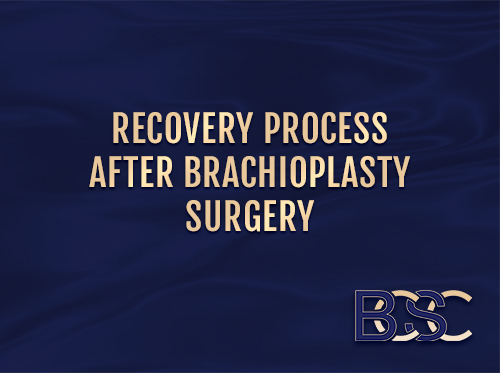Does Brachioplasty Surgery Reduce Sweating?
Does excess underarm sweating cause you to soak through your shirts? Is it stopping you from wearing the clothes you love or hitting the gym? Sweat stains can be socially embarrassing (Ref 1) and prevent you from feeling comfortably dry.
If prescription anti-perspirants aren’t cutting and you’re already considering arm lift surgery, you’re in luck. In this article, you’ll learn about some of the most popular services for armpit sweating, how arm lift surgery might reduce perspiration, and signs of hyperhidrosis to watch out for.
What is Hyperhidrosis? (Excess Sweating)
Everyone gets sweaty now and then, but anti-perspirant is usually enough to do the trick. Yet for others, sweating can be excessive. For people living with hyperhidrosis, over-producing sweat can happen regardless of body temperature or activity level.
Focal Hyperhidrosis vs Generalised Hyperhidrosis: What’s the difference?
Generalised hyperhidrosis can affect the entire body. It’s often secondary to an underlying disease or nervous system dysfunction, but the cause isn’t always clear. Focal hyperhidrosis, also called primary hyperhidrosis, affects specific body areas such as the underarm, palms, or soles of the feet. Focal primary hyperhidrosis is more common. It’s estimated to affect nearly three percent of people. (Ref 1)
Excessive Underarm Sweating (Axilla Hyperhidrosis)
While focal hyperhidrosis may affect the palms and feet, it’s especially common in the underarm area, which is concentrated with sweat glands. Millions of people have axillary hyperhidrosis (excessive armpit sweating) and seek treatments to minimise sweating.
Symptoms of Focal Hyperhidrosis

Symptoms of Focal Hyperhidrosis – Infographic | BCSC
Here are some clues that hint at focal hyperhidrosis.
- Sweating excessively despite the weather.
- Sweat soaks through clothes on a regular basis.
- Regular anti-perspirants aren’t enough to control sweating.
- Excessive sweating occurs even without strenuous exercise.
- Underarms, hands, or feet get clammy, regardless of temperature.
Diagnosing Focal Hyperhidrosis

Diagnosing focal hyperhidrosis – Infographic | BCSC
If you have any of the above hyperhidrosis symptoms, speak to your GP. They can evaluate you and diagnose focal hyperhidrosis. Once properly diagnosed, you may consider looking into aesthetic procedures to help you stay dry.
How do doctors diagnose focal hyperhidrosis?
To diagnose focal hyperhidrosis, a GP may ask if you’ve had visible excessive sweating for six months or longer AND at least two of the following symptoms:
- A family history of excessive sweating
- Your age of onset was 25 years old or younger
- Excessive sweating seems to stop during sleep
- At least one episode of excessive sweating per week
- Difficulty engaging in daily activities due to excessive sweating
Your doctor may also perform the Minor’s starch iodine test, which turns the sweat purple on contact to reveal how much a person is sweating. (Ref 1)
Is axillary hyperhidrosis treatable?
People who produce too much sweat often complain of clammy hands or sweat-soaked shirts. Yet, the underarms tend to be affected most since the axilla (armpit) is densely packed with sweat glands.
The good news is that armpit hyperhidrosis is a treatable condition. And people who plan to undergo arm lift surgery (brachioplasty) to remove excess fat and skin have a unique opportunity to ** excess armpit sweating. Sweat reduction procedures may be able to take place at the same time as arm lift surgery, potentially saving time, money, and tackling multiple medical issues at once.
Will brachioplasty surgery help with underarm sweating?

Face blurred for privacy
Disclaimer: Operation performed by Dr Bernard Beldholm. Adult content, surgery has risks; individual results vary, seek 2nd opinion. Please see the full disclaimer.
Arm lift surgery (brachioplasty) is a medical procedure that removes ** skin and extra arm fat that’s left behind due to ageing or losing weight. The surgery isn’t great at reducing sweat glands since it’s focused on removing the excess skin and fat. However, it may reduce sweating in other ways.
Scenario 1: Sweat Glands May Be Removed Along with the Excess Skin
During an arm lift procedure, a surgeon removes excess skin and may also use VASER liposuction to eliminate pockets of fat. Removing the full skin thickness means some of the sweat glands are removed. Although the incisions are usually located on the inner upper arm, a limited-incision arm lift may have an incision placed in the armpit. Patients that have an armpit skin resection may notice they sweat less, although that’s not the goal of arm lift surgery. (Ref 2)
Scenario 2: Removing ** Skin Folds May Decrease Sweating Since the Skin Won’t Trap as Much Heat
After bariatric surgery, many people wind up with skin folds that bunch together. The skin folds create a warm, moist environment that’s prone to odours and excess sweating since the skin isn’t exposed to the air. If they have arm lift surgery to remove the skin folds, they may notice less sweating in the armpits or upper arms, depending on the surgical site.
Brachioplasty surgery is not a first-line treatment for hyperhidrosis
While there can be some reduction in sweating after arm lift surgery, sweat control is not the goal of the operation. Arm lift operations are for patients with excess skin after weight loss. Most people interested in arm lift surgery are primarily hoping to achieve:
- A reduction in arm fat
- Tighter upper arms
- Removal of excess ** skin
People living with axillary hyperhidrosis may want to look into sweat gland reduction procedures to keep underarms dry. These services may be performed along with an arm lift or as a standalone procedure.
Sweat reduction options to combine with upper arm lift surgery
Here are the three of the most popular options.
- miraDry
- Neurotoxin injections
- Sweat gland removal surgery
Sweat Gland Removal Surgery
Can you imaging never dealing with stinky armpits? Sweat gland reduction surgery (aka sweat gland debulking, hyperhidrosis surgery, or suction curettage) removes underarm sweat glands to minimise sweating. (Ref 1) It may not totally eliminate underarm sweat glands, but it can drastically decrease the amount of sweat produced. Medical research shows it is up to 90 percent effective at reducing underarm sweat. (Ref 1) The surgery usually takes place under general or local anaesthesia and the results can last decades.
Sweat gland debulking in the underarm area is an aggressive option compared to alternatives such as hyperhidrosis injections, but the results last significantly longer. Since it’s a surgical treatment, you’ll need to talk to your doctor about the general risks, what to expect post surgery, and whether it can happen during your arm lift surgery.
Although typically reserved for the most severe of armpit sweat sufferers, this surgical procedure can have a fantastic result. If all goes well, the surgical site heals well and normal daily activities are typically resumed a week later for most patients.
miraDry for Hyperhidrosis
Like sweat gland removal surgery, miraDry is considered a long-term solution since the effects can last up to 12 months or longer. (Ref 3) The difference is it is a non-surgical procedure, which means it may have fewer risks and cost less.
miraDry is an in-office procedure that uses thermal energy to target and destroy sweat glands. It can decrease sweat production and minimise sweating indefinitely. A medical study found that 9 of 10 miraDry test subjects “had at least a 50% reduction in axillary sweat from baseline”. (Ref 3)
The miraDry procedure has minimal discomfort, so it does not require local anaesthetic. The healing process after miraDry is also usually quick and uneventful. Side effects are typically minor. Some patients experience inflammation. Temporary swelling, tenderness, and numbness were usually short-lived. (Ref 3) Most miraDry side effects (like swelling or redness in the treated area) go away quickly. Many patients return to normal activities the same day.
While it’s a popular solution for sweaty underarms and other treated areas, miraDry is not right for everyone. For example, if you’re pregnant or breast feeding, your doctor may advise against it.
Again, the procedure is not especially painful, so local anaesthetic isn’t necessary. However, if you plan to undergo arm lift surgery anyway, it could be an opportunity to try miraDry so you won’t feel anything.
How many treatments are needed? For optimal effects, a second session may be necessary a few weeks later.
Neurotoxins Injections for Hyperhidrosis
You’ve heard of anti-wrinkle injections for facial wrinkles, but did you know neurotoxins can also reduce armpit sweating for an average of 6.7 months at a time? (Ref 1, Ref 3) A single injection session using a small disposable syringe targets the related nerve impulse to temporarily decrease overactive sweat glands. It’s a quick procedure that can easily take place before, during, or after arm lift surgery. Numerous medical researchers agree it is the most effective non-surgical remedy for excess underarm perspiration. (Ref 1, Ref 3)
The initial side effects are relatively minor. Most patients report only minor redness, swelling, and temporary discomfort for a few hours at most. Mild bruising is rare. While other risks are possible, many people find the injection procedure reduces or stops sweat production for months at a time. To stay dry, repeat sessions will be needed once the effects wear off.
FAQs
How else can I treat excessive sweating?
There are a number of ways to keep underarms dry, even when you can’t maintain normal body temperature during exercise. Firstly, wear lightweight, breathable clothes. You might also try a prescription-strength anti-perspirant if you sweat more than average. If you notice excess perspiration in areas with hair bearing skin, consider shaving to decrease compensatory sweating.
What causes hyperhidrosis?
For some people, it’s idiopathic, meaning a cause is not known. (Ref 1) For others, hyperhidrosis is linked to metabolic or systemic diseases, or taking medications like quinolone antibiotics and those used to treat myasthenia gravis or neurologic conditions.
References
- Schlereth T. Hyperhidrosis—Causes and Treatment of Enhanced Sweating. Deutsches Aerzteblatt Online. June 26, 2009.
- Paule Regnault. Brachioplasty, axilloplasty, and pre-axilloplasty. Aesthetic Plastic Surgery. 1983;7(1):31-36.
- Hong HC, Lupin M, O’Shaughnessy KF. Clinical evaluation of a microwave device for treating axillary hyperhidrosis. Dermatologic Surgery: Official publication for American Society for Dermatologic Surgery [et al]. May 2012;38(5):728-735.


